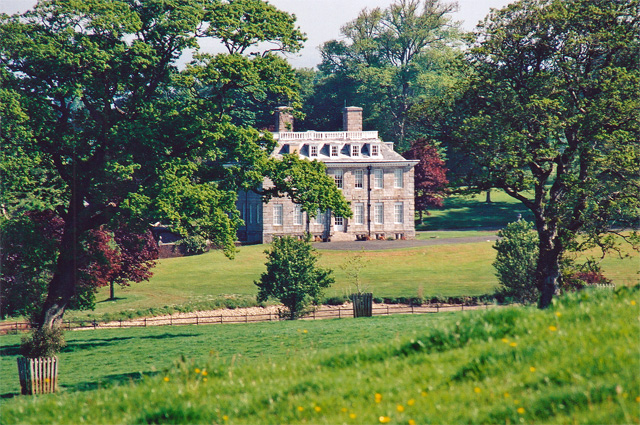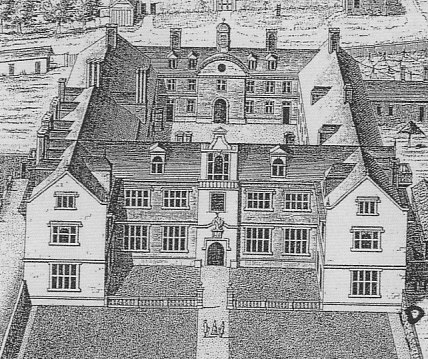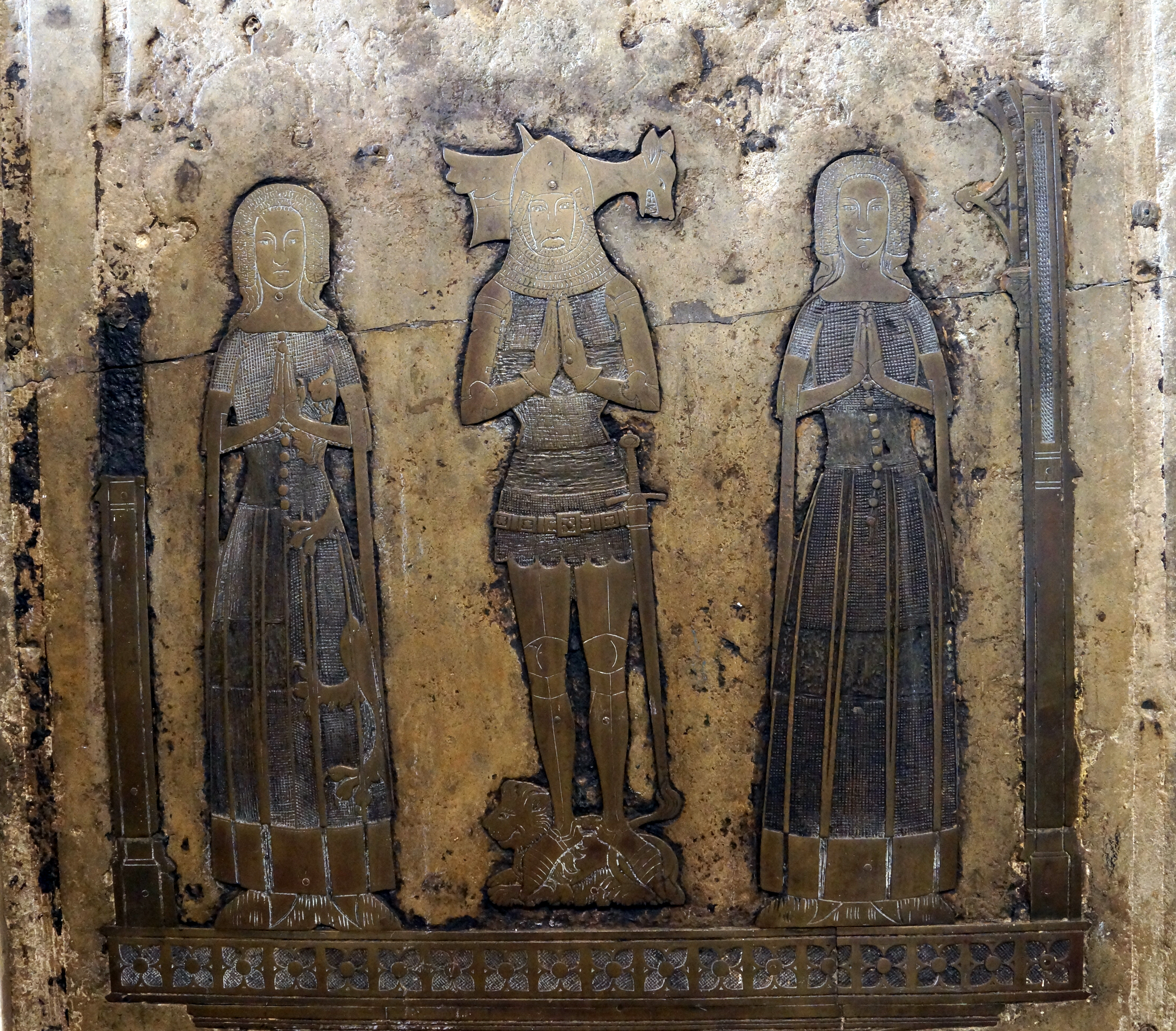|
Lyneham, Yealmpton
Lyneham in the parish of Yealmpton in Devon, is an historic estate. The surviving grand mansion house known as ''Lyneham House'' is a grade I listed building. It was built c.1699-1703 by Sir Courtenay Croker (died 1740), MP for Plympton Morice in 1699. A drawing of Lyneham House dated 1716 by Edmund Prideaux (1693–1745) of Prideaux Place, Padstow, Cornwall, survives at Prideaux Place. It shows formal gardens in front with flanking pavilions and an orangery. The estate was,Cherry & Pevsner, p.553 after Crocker's Hele,Vivian, p.254 in the parish of Meeth,Hoskins, p.434Pole, p.379; Risdon, p.261 the second earliest known Devonshire home of the Croker family, one of the most ancient in Devon according to ''"that old saw often used among us in discourse"'', the traditional rhyme related by Prince (died 1723): ''"Crocker, Cruwys, and Coplestone'', ''When the Conqueror came were at home"'' The last male of the Crocker family of Lyneham was Courtenay Crocker (died 1740), several ... [...More Info...] [...Related Items...] OR: [Wikipedia] [Google] [Baidu] |
Allodial Title
Allodial title constitutes ownership of real property (land, buildings, and fixtures) that is independent of any superior landlord. Allodial title is related to the concept of land held "in allodium", or land ownership by occupancy and defense of the land. Most property ownership in common law jurisdictions is fee simple. In the United States, the land is subject to eminent domain by federal, state and local government, and subject to the imposition of taxes by state and/or local governments, and there is thus no true allodial land. Some states within the U.S. (notably, Nevada and Texas) have provisions for considering land allodial under state law, and the term may be used in other circumstances. Land is "held of the Crown" in England and Wales and other jurisdictions in the Commonwealth realms. Some land in the Orkney and Shetland Islands, known as udal land, is held in a manner akin to allodial land in that these titles are not subject to the ultimate ownership of the C ... [...More Info...] [...Related Items...] OR: [Wikipedia] [Google] [Baidu] |
Justice Of The Common Pleas
Justice of the Common Pleas was a puisne judicial position within the Court of Common Pleas of England and Wales, under the Chief Justice. The Common Pleas was the primary court of common law within England and Wales, dealing with "common" pleas (civil matters between subject and subject). It was created out of the common law jurisdiction of the Exchequer of Pleas, with splits forming during the 1190s and the division becoming formal by the beginning of the 13th century. The court became a key part of the Westminster courts, along with the Exchequer of Pleas (qualified to hear cases involving revenue owed to the King) and the Court of King's Bench (authorised to hear cases involving the King), but with the Writ of Quominus and the Statute of Westminster, both tried to extend their jurisdiction into the realm of common pleas. As a result, the courts jockeyed for power. In 1828 Henry Brougham, a Member of Parliament, complained in Parliament that as long as there were three cour ... [...More Info...] [...Related Items...] OR: [Wikipedia] [Google] [Baidu] |
Bishop's Nympton
Bishop's Nympton is a village and civil parish in the North Devon district of Devon, England, about three miles east of South Molton. According to the 2001 census it had a population of 932. The electoral ward has the same name but covers the village and much of the land to the north-east. The ward population at the 2011 census was 1,911. It has been the main area for the filming of a 1990s television program called ''The Passion''. It was also home to wildlife filmmaker Johnny Kingdom who is buried in the village cemetery just outside the village. The tall, 15th-century church tower is a local landmark, and contains a Norman baptismal font, a 15th-century arcade, and a "richly carved" Easter Sepulchre monument generally assumed to commemorate Sir Lewis Pollard (d.1526), Judge of the Common Pleas A court of common pleas is a common kind of court structure found in various common law jurisdictions. The form originated with the Court of Common Pleas at Westminster, whic ... [...More Info...] [...Related Items...] OR: [Wikipedia] [Google] [Baidu] |
Grilstone, Bishop's Nympton
Grilstone in the parish of Bishop's Nympton in north Devon, England, is an historic estate. The present grade II listed house, situated about 1 1/4 miles south-east of the market town of South Molton, is Georgian, an 1834 extension and remodelling by Rev. William Thorne of an earlier building. It is best known as the seat of Sir Lewis Pollard (c. 1465 – 1526), Justice of the Common Pleas from 1514 to 1526 and a Member of Parliament for Totnes in 1491. History de Grilstone The earliest recorded holder of the estate, in the 13th and 14th centuries, was the ''de Grilstone'' family, which as was usual took its name from its seat. In 1374 a member of the family obtained from the Bishop of Exeter a licence to have a chapel on the site. Pollard The Pollard family had originated at the manor of Way in the parish of St Giles in the Wood, near Great Torrington, Devon, called by Hoskins (1954) "the ''fons et origo'' of the mighty tribe of Pollard". The present house is a grade II ... [...More Info...] [...Related Items...] OR: [Wikipedia] [Google] [Baidu] |
Lewis Pollard
Sir Lewis Pollard (c. 1465 – 21 October 1526) of Grilstone in the parish of Bishop's Nympton, Devon, was Justice of the Common Pleas from 1514 to 1526 and served as MP for Totnes in 1491 and was a JP in Devon in 1492. He was knighted after 1509.Baker He was one of several Devonshire men to be "innated with a genius to study law", as identified by Fuller, who became eminent lawyers at a national level. He was a kinsman of the judge and Speaker of the House of Commons Sir John Pollard (c. 1508 – 1557). Origins Pollard was a member of an ancient Devonshire gentry family, a younger son of Robert Pollard, second son of John Pollard of Way in the parish of St Giles in the Wood, near Great Torrington, Devon, by his wife, Jane, daughter of William Marwood of Westcott (by his first wife Elizabeth Squire). Risdon states that Sir Lewis Pollard resided at Grilston, in the parish of Bishop's Nympton, before he purchased the nearby manor of King's Nympton to the south. Car ... [...More Info...] [...Related Items...] OR: [Wikipedia] [Google] [Baidu] |
Heanton Satchville, Petrockstowe
Heanton Satchville was a historic manor in the parish of Petrockstowe, North Devon, England. With origins in the Domesday manor of Hantone, it was first recorded as belonging to the Yeo family in the mid-14th century and was then owned successively by the Rolle, Walpole and Trefusis families. The mansion house was destroyed by fire in 1795. In 1812 Lord Clinton purchased the manor and mansion of nearby Huish, renamed it Heanton Satchville, and made it his seat. The nearly-forgotten house was featured in the 2005 edition of Rosemary Lauder's "Vanished Houses of North Devon". A farmhouse now occupies the former stable block with a large tractor shed where the house once stood. The political power-base of the Rolle family of Heanton Satchville was the pocket borough seat of Callington in Cornwall, acquired in 1601 when Robert Rolle (died 1633) purchased the manor of Callington.Hunneyball (2010) Description of mansion The mansion was at one time "one of the most imposing ho ... [...More Info...] [...Related Items...] OR: [Wikipedia] [Google] [Baidu] |
Monumental Brass
A monumental brass is a type of engraved sepulchral memorial, which in the 13th century began to partially take the place of three-dimensional monuments and effigies carved in stone or wood. Made of hard latten or sheet brass, let into the pavement, and thus forming no obstruction in the space required for the services of the church, they speedily came into general use, and continued to be a favourite style of sepulchral memorial for three centuries. In Europe Besides their great value as historical monuments, monumental brasses are interesting as authentic contemporary evidence of the varieties of armour and costume, or the peculiarities of palaeography and heraldic designs, and they are often the only authoritative records of the intricate details of family history. Although the intrinsic value of the metal has unfortunately contributed to the wholesale spoliation of these interesting monuments, they are still found in remarkable profusion in England, and they were at one ... [...More Info...] [...Related Items...] OR: [Wikipedia] [Google] [Baidu] |
Devon (UK Parliament Constituency)
Devon was a parliamentary constituency covering the county of Devon in England. It was represented by two Knights of the Shire, in the House of Commons of England until 1707, then of the House of Commons of Great Britain from 1707 to 1800 and finally the House of Commons of the United Kingdom from 1801 to 1832. Elections were held using the bloc vote system of elections. Under the Reform Act 1832, it was split into two divisions, North Devon and South Devon, for the 1832 general election. Boundaries The constituency consisted of the historic county of Devon, excluding the city of Exeter which had the status of a county in itself after 1537. (Although Devon contained a number of other parliamentary boroughs, each of which elected two MPs in its own right for part of the period when Devon was a constituency, these were not excluded from the county constituency, and owning property within the borough could confer a vote at the county election. This was not the case, though, ... [...More Info...] [...Related Items...] OR: [Wikipedia] [Google] [Baidu] |
Member Of Parliament
A member of parliament (MP) is the representative in parliament of the people who live in their electoral district. In many countries with Bicameralism, bicameral parliaments, this term refers only to members of the lower house since upper house members often have a different title. The terms Member of Congress, congressman/congresswoman or Deputy (legislator), deputy are equivalent terms used in other jurisdictions. The term parliamentarian (other), parliamentarian is also sometimes used for members of parliament, but this may also be used to refer to unelected government officials with specific roles in a parliament and other expert advisers on parliamentary procedure such as the Senate Parliamentarian in the United States. The term is also used to the characteristic of performing the duties of a member of a legislature, for example: "The two party leaders often disagreed on issues, but both were excellent parliamentarians and cooperated to get many good things done." ... [...More Info...] [...Related Items...] OR: [Wikipedia] [Google] [Baidu] |
Heraldic Visitations
Heraldic visitations were tours of inspection undertaken by Kings of Arms (or alternatively by heralds, or junior officers of arms, acting as their deputies) throughout England, Wales and Ireland. Their purpose was to register and regulate the coats of arms of nobility, gentry and boroughs, and to record pedigrees. They took place from 1530 to 1688, and their records (akin to an upper class census) provide important source material for historians and genealogists. Visitations in England Process of visitations By the fifteenth century, the use and abuse of coats of arms was becoming widespread in England. One of the duties conferred on William Bruges (or Brydges), the first Garter Principal King of Arms, was to survey and record the armorial bearings and pedigrees of those using coats of arms and correct irregularities. Officers of arms had made occasional tours of various parts of the kingdom to enquire about armorial matters during the fifteenth century. However, it was ... [...More Info...] [...Related Items...] OR: [Wikipedia] [Google] [Baidu] |





